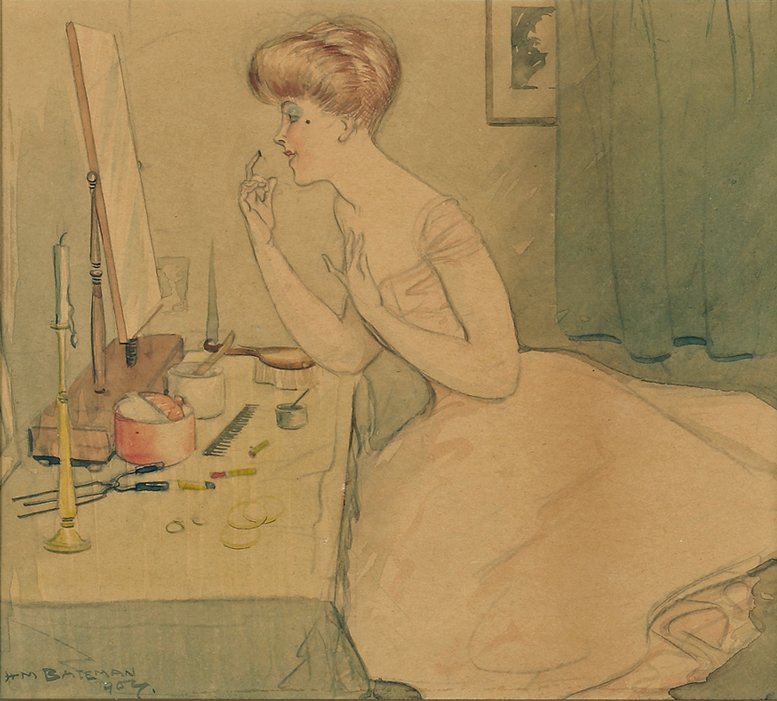Artists
Henry Mayo Bateman
English, 1887–1970H. M. Bateman was noted for his “The Man Who…” series of cartoons, featuring comically exaggerated reactions to minor and usually upper-class social gaffes, such as “The Man Who Lit His Cigar Before the Loyal Toast”, “The Man Who Threw a Snowball at St. Moritz” and “The Boy Who Breathed on the Glass at the British Museum.”
He was born in the small village of Sutton Forest in New South Wales, Australia. His parents were Henry Charles Bateman and Rose Mayo. His father had left England for Australia in 1878 at the age of 21 to seek his fortune, then returned to England briefly in 1885 before going back with an English wife. Soon after Henry was born, his strong-willed mother insisted that they return to London ‘and civilisation’. He had one sister, Phyllis, three years younger. Henry remained in England for the remainder of his life except for one disappointing visit to his birthplace.[citation needed]
Henry was always drawing from an early age, consistently producing funny drawings that told stories. He was inspired by comics, and he had a keen critical eye, and was enthusiastically drawing at every available moment. At the age of fourteen he had already decided that he would draw for publication. In 1901 the cartoonist Phil May, in response to a letter from Rose, showed interest in his drawings, and that year he was inspired by an exhibition of black-and-white art at the Victoria and Albert Museum. His father had initially decided that his son should follow him into business, but eventually, after many arguments between him and Rose, his father financed his study at the Westminster School of Art which he commenced at the age of sixteen. He did well, but was bored by the lifeless “life” classes and after qualifying at Westminster transferred his study to the Goldsmith Institute.
His first contract was in 1904, for ten drawings and two illustrations in a fourpenny monthly magazine called The Royal. At the age of 17, his style was already that of a mature artist. He then progressed to a contract with The Tatler. Bateman greatly influenced the style of American cartoonist Harvey Kurtzman.
He married Brenda Collison Wier and they had two children, Diana and Monica, both of whom became artists. They lived at Curridge at Chieveley in Berkshire.
In later life he carried on an increasingly acrimonious battle with the Inland Revenue. His final years were spent on the island of Gozo.[2]
An English Heritage blue plaque, unveiled in 1997, commemorates Bateman at 40 Nightingale Lane in Clapham.
Reference:
Dictionnaire des Petits Maitres de la Peinture 1820-1920, by Gerald
Schurr & Pierre Cabanne


